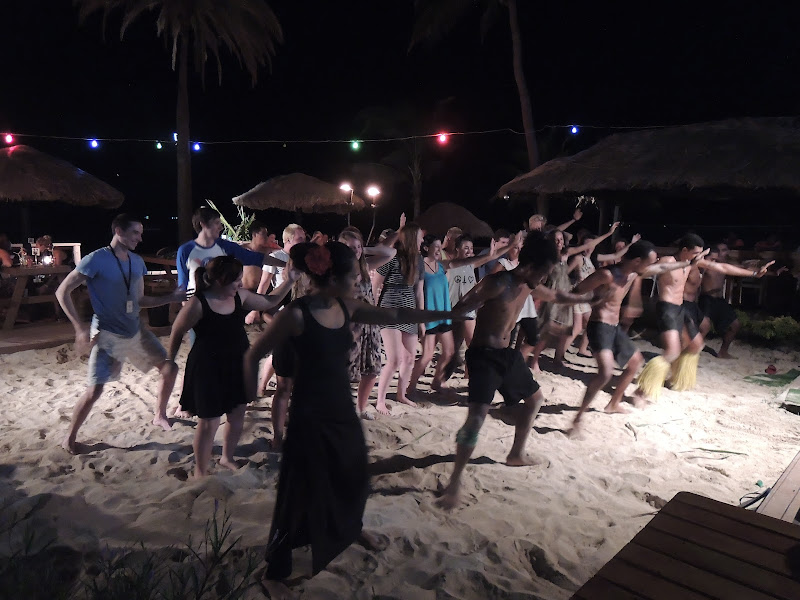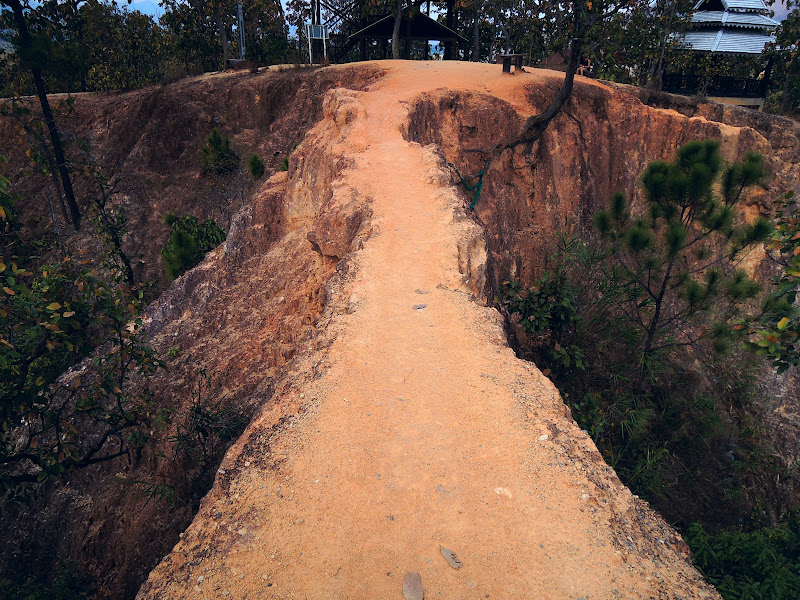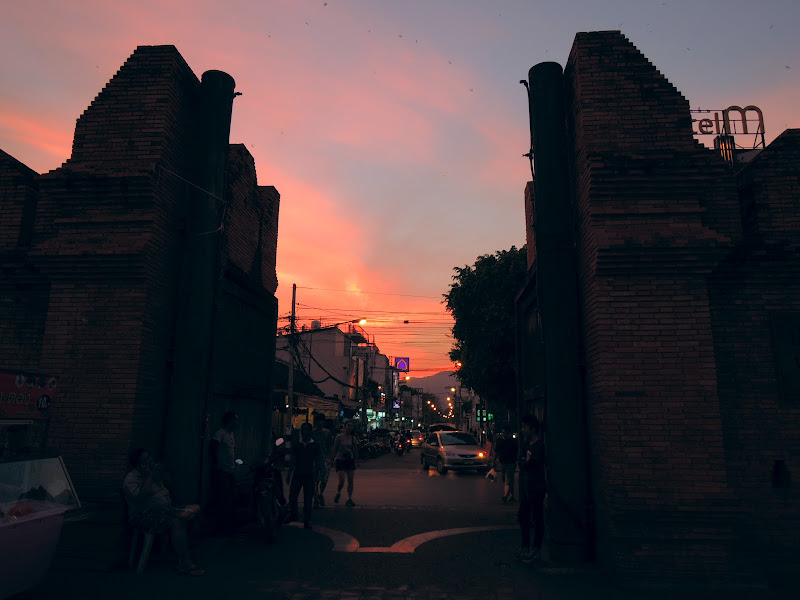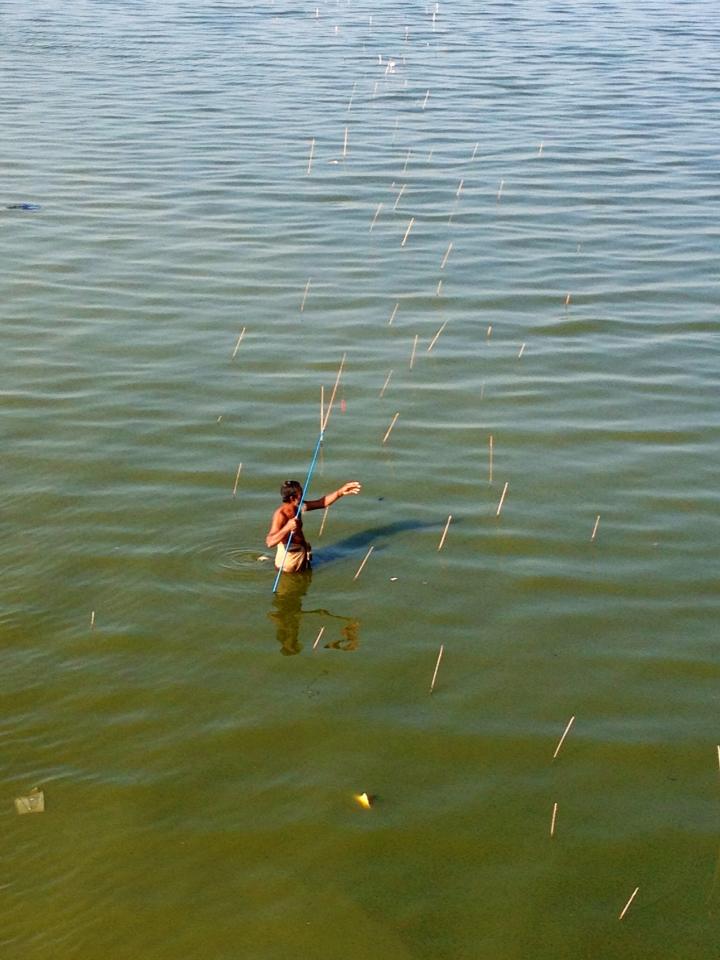It was with little more knowledge about the place than "Mandalay, sounds alright" that I arrived in the city. I met a guy named Koko who had a motorbike taxi and agreed to take me out around all the sights. Mandalay was one of the old capitals of the Kingdom of Burma, the very last before the British booted the King out and colonised the place. Burmese kings of old had a habit of moving their capitals every few generations, and close by are ancient former capitals Amarapura and Inwa.
Koko had a pretty tight itinerary that it seemed he'd perfected over time. We zipped to a gold leaf workshop, Maha Muni Temple with its highly revered statue of Buddha believed to be one only a few constructed during his lifetime (women are not allowed to enter the main chamber), and some textile workshops.
Next it was off to Amarapura to see 1,500 monks have their breakfast at the Mahagandayon monastery. Although seeing the lines of monks with their bowls was impressive, I was very interested in the busloads of older tourists that didn't seem to care about making the men feel uncomfortable by thrusting gigantic lenses up in their faces.


Our next stop was Sagaing Hill, which I'd spotted on the bus ride into the city. This enormous hill on the banks of the Ayarwady River is dotted all over with golden stupas and my photo simply does not do it justice, partly due to the smog drifting across from the city.

Apparently the thing to do is climb this hill and take a picture from the summit, which I can tell you is no mean feat. Koko gave me a cheerful "See you in fifteen, twenty minutes!" as he planted himself in the restaurant at the bottom of the enormous flight of stairs. After much huffing, puffing and swearing (I'm not as young as I once was) my seemingly epic climb was completed.

My next port of call was the old capital Inwa, accessible by a quick boat trip across the river onto an island, and hiring a pony trap around the dirt tracks. Everyone there seemed very businesslike and it was my first uncomfortable experience with a more aggressive haggling scenario in the country. There were some great old monasteries and temples there (the teak one at Bagaya Kyaung especially) but for the rest of the afternoon I couldn't shake off the memory of the unpleasant interaction I'd had with some of the people there .


At this point my camera committed the ultimate betrayal as the battery died just as we arrived back in Amarapura at the famous U Bein Bridge. Spanning a distance of 1.2km, it claims the enviable title (?) of longest teak bridge in the world. I was relegated to using my iPhone to capture my momentous crossing.
As I hinted earlier, the Mandalay region seems a little more tourism-savvy than the rest of Myanmar, which is a little sad because (and feel free to call me a hypocrite here) I think an influx of tourists irreversibly changes a local culture, mostly for the worse. In Thailand for instance it sometimes feels like locals play up to a cartoony stereotype to match up to the expectations of Western tourists, who can then go home and gush about the "authentic" experience they had visiting what they will call a "Third World" country. Because a bunch of people piling onto a tour bus, piling off at designated spots of interest, thrusting cameras into the faces of local people (often without the decency to even ask permission - they're human beings too!), and consuming meals way beyond the pockets of the Average Thai Joe is an authentic way to experience a culture.
I guess I'm cynical because I see how the tourism industry in Fiji works when I visit my relatives. I don't look Fijian (at all, my parents did well mixing me into a racial enigma that could be questioned by bold confused people her whole life) so if I'm not with my cousins I can be 'babied' in the tourist way by people who think I'm a foreigner. There they paint this picture that everything is quaintly coconuts and beaches. A friend of mine who will be travelling with me to Fiji next week on his first ever trip overseas actually asked if people wear coconut shell bras and grass skirts. The tourism industry there is so developed a visitor can enter the country, get on a shuttle bus, get on a boat, reach the resort and spend 5 days and 4 nights without even having to make contact with a (ugh) real Fijian person who isn't playing the role of the happy-go-lucky character cleaning your room or mixing your drinks.
So tourists go home with this warped perception of a country: "the beaches were splendid although I do think the kite-surfing scene is surprisingly underdeveloped still" or "the hotel was pleasant enough, although I do think the yoghurt, fruit and muesli at breakfast was a little more yoghurt, muesli and fruit, wouldn't you agree Tarquin?" Never mind that Salote who slaved over your meals goes home with a couple of bucks pay a day to a two room flat with a large family, no refrigerator, a shitty electrical connection and wearing second-hand clothing. Tourists aren't interested in the actual lifestyle and culture of the locals, just whether or not they've skimmed the guides enough to drop interesting facts into conversation when they brag over the watercooler about the big trip, and if their photos are Facebook worthy.
This is where you may call "hypocrite" on me now, or argue that we're all injecting money into their economies anyway, so who really cares? I agree on the hypocrite bit. This trip, aside from in Yangon, I haven't met a single local who wasn't providing a service for me. I've done the Backpacker Tour Lite. If I'd done most of this trip solo I probably would've tried couch surfing a bit but that's a 'shoulda, coulda, woulda' at this point.
Yes, we do inject much needed cash into these economies, and it's fantastic that a place as troubled as Myanmar is finally opening up to the world, but at what cost culturally? In ten years' time, are they going to be hardened and businesslike, like their Thai neighbours? Will the country see the arrival of backpacker ghettos and bars? Are people going to shout out "hello" in the street anymore? Will the wait staff in restaurants still have that
charming air of being new to something and trying their
hardest to do their best for you? Will a Burmese person approaching a tourist in a temple be an entirely innocent offer of friendship or a hard sell?
I liked Mandalay. However, it was a sad reminder that part of Myanmar's charm is that it's relatively new to the tourist thing, and we will eventually shape the culture to our expectations and wants.























































